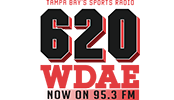Bankroll Building
There are many ways to measure success as a sports bettor. Actually, that’s entirely fiction: the health of your bankroll is the only measuring stick that needs to be kept in this business. Before you get fired up over there telling me I’m an idiot, that statement isn’t meant to imply we all can achieve the same success as the world’s elite betting groups because everything is relative. However, there are a few tracking metrics that resonate the same way with recreational bettors as they do with the professionals.
Lets first bust a myth that drives me absolutely nuts in this field: people hell bent on determining the success of their sports wagering purely by win percentage. Assuming traditional -110 juice on every bet, the required percentage to break even is 52.38%. What the experts fail to tell you is that you’ll probably be able to count on one hand the number of successful bettors that lay traditional 11/10 on every single wager. We’ve all heard that 60% is the supposed gold standard but there’s noise in that number as well unless you bet the exact same amount on every game…which of course is a long term losing strategy. In my opinion the only time winning percentage needs to enter the equation at the forefront of this discussion is sports betting contests where everyone competes on a level playing field. Ok Todd, enough with the negativity bullshit, tell us something we can use.
For my wagering purposes (and there will be disagreement) I determine overall success through a ROI (return on investment) calculation. Now, there’s more to this ROI discussion than a simple equation, especially when it comes to how you calculate your figures. For those that have a set bankroll, which everyone should, entering a given season the math is straightforward: start with $5X…turn it into $7.5X and you come up with a ROI of 50%, an outstanding return on investment by any money manager’s standards. There is also another school of thought that’s more in line with how casino operators calculate slot machine coin in.
Rather than bore you with extensive details of that math, understand the starting point of $5X for the previous example is purely hypothetical. Every time you make a bet, your overall volume (or coin in) grows. For example, if your typical position is $220 to win $200 and you bet 3 games in a day your volume is $660. If you won 2 of the 3 bets, your resulting figure is +180. Divide your net profit into the money risked ($180/$660) giving you a ROI on those 3 wagers of 27%. Using the previous example of a $5X bankroll, if we still end up with a “win” of $2,500 resulting from bets totaling nearly $25X you’d be looking at roughly 10% ROI. In my opinion, I feel this method is a better indication of your overall betting efficiency. If you can achieve similar profits with less risk, it speaks volumes about your discipline and the precision of the wagers you’re choosing to make. Now, it’s important to note; I would much rather have 1% ROI if it meant a profit of $5,000 versus 11% ROI that only yields $1,100 for the season because you can still only take hard dollars to the bank last I checked, not ROI.
Why do I stress ROI as a useful metric in determining overall success? It provides an accurate snapshot of the daily grind. When you continually see higher returns per bet coming from a specific sport(s), it doesn’t take a rocket scientist to understand your time and money is best spent investing where the greatest returns materialize. Remember, nothing in sports is iron clad or static: Take advantage of simple financial calculations that translate the same way to sports gambling as they do the highest levels of finance. Always grow and evolve in this business…only the insane continue to do the same thing over and over again expecting different long-term results.












